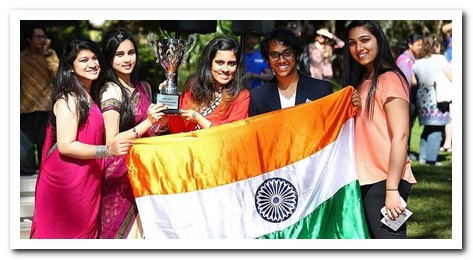Australian universities are not even on “the radar” for Indian students planning to study abroad and should consider a recruitment campaign targeting second tier Indian cities, according to the Visiting Chair in Contemporary India at the University of Sydney Business School.
With nearly half a million foreign students enrolled in Australian universities this year, tertiary education is an export earner now worth almost 30 billion dollars. However, the vast majority of foreign students are Chinese while only 11 per cent are from India.
Professor Vinish Kathuria, who is the first academic to hold Sydney’s Visiting Chair in Contemporary India, says he understands Australia’s economic relationship with China but believes that it would be better for our universities to deal with a “portfolio of countries”.
“You never know which economy may go up or may go down in the near future so it’s better to have a portfolio of countries,” Professor Kathuria said and added that, “India has some certain advantages in that most people can speak English allowing India students to gel much faster”.
In order to attract Indian students, he suggested that Australian universities target second tier Indian cities perhaps with the offer of participation in a six month exchange program.
“Students in major centres like Mumbai, Delhi and Bangalore inevitably look to the United States or Europe when they consider a foreign university,” Professor Kathuria said. “Australia isn’t even on the radar for these students.”
He says Australian universities could work with educational institutions in “second tier” Indian cities to attract students aspiring to study abroad.
“With a six months exchange program, it might even be possible to target tier one cities,” Professor Kathuria added.
Professor Kathuria is from the Shailesh J. Mehta School of Management at Mumbai’s Indian Institute of Technology where his teaching and research activities have been mainly focused on productivity, industrial Organisation, energy economics, and environmental economics.
Before joining the School he was on Fulbright Senior Researcher fellowship to University of Colorado, Boulder.
The Visiting Chair in Contemporary India is aimed at developing “scholarly interactions” between the two countries, at “disseminating information on India and at creating a wider appreciation of India-related issues”.
“We believe the Chair will generate interest in India amongst academics and students; establish relationships that may lead to collaborative projects; encourage student and staff to visit India and strengthen the overall relationship between the University and India,” said Amanda Sayan, Director of Partnerships in the University’s Office of Global Engagement.
“The University of Sydney is keen to ensure that it’s students are Asia literate and for this reason, we are now starting to send them to India on New Colombo Plan Scholarships,” added Ms Sayan. “We now expect interest in India to grow dramatically.”
Professor Kathuria hopes that the chair, to be rotated through various University faculties over time, will help Australians understand the enormous changes now underway in India, the world’s third largest economy and the opportunities on offer to both countries.
Renewable energy development, he says, is one area in which India and Australia have much to offer each other.
“India’s role in our region is already enormous and will continue to grow,” said the Business School’s Dean, Professor Greg Whitwell. “It is vital that Australia strengthens it ties at all levels with Indian institutions and the Indian people.”
“The Visiting Chair in Contemporary India has a vital role to play in this important process,” Professor Whitwell concluded.

